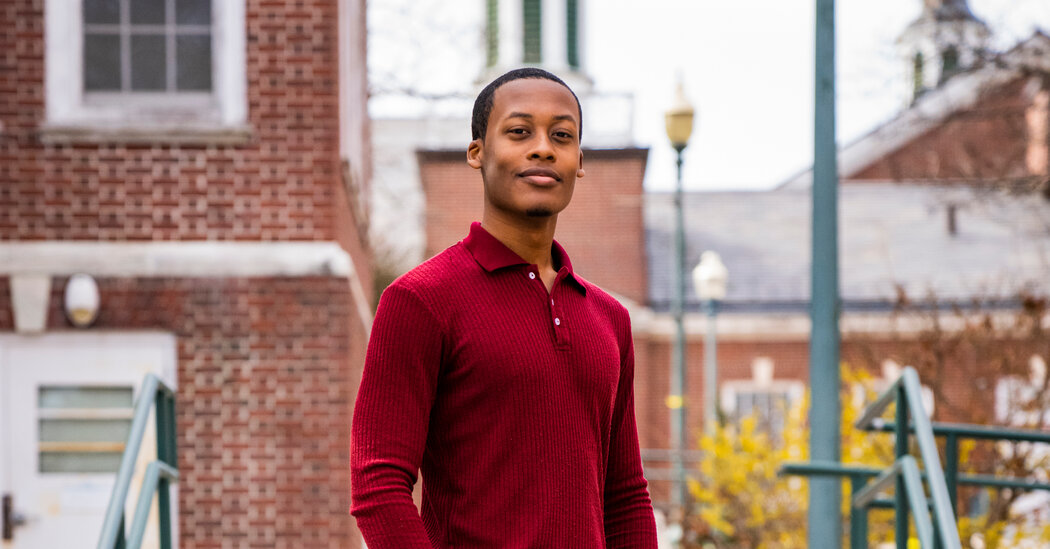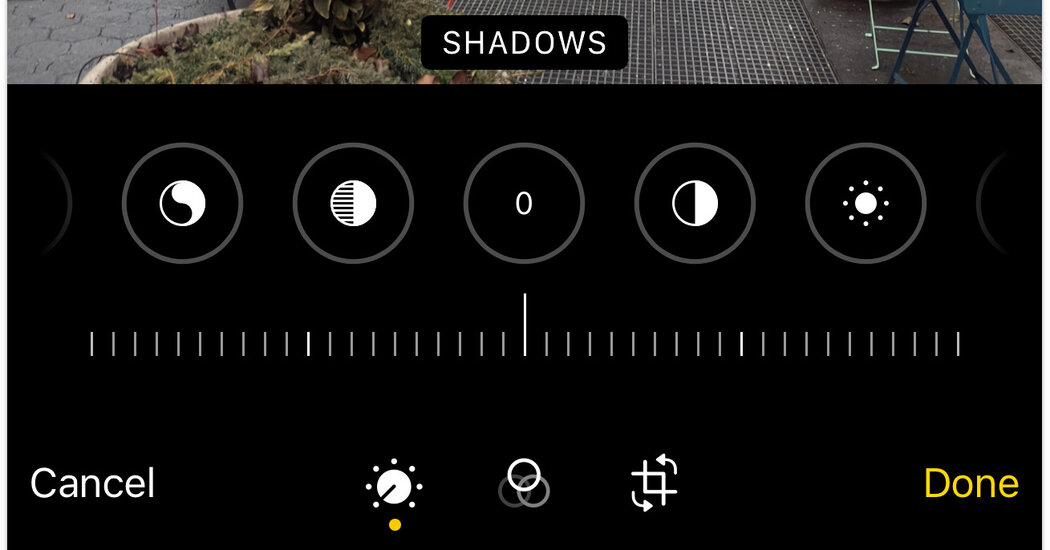‘Hot Ones’ Was a Slow Burn All Along
Bob Odenkirk was dubious when he walked onto the set of the long-running YouTube interview show “Hot Ones” last month. He was, after all, about to take on the “wings of death,” as the lineup of treacherously spicy chicken is called.
“I’ve heard such good things about the show,” Odenkirk told Sean Evans, its even-keeled host, once cameras were rolling, but “I think I’m perfectly capable of talking without having a part of my body injured.”
Despite peppering the interview with a couple of F-bombs, Odenkirk, the Emmy-nominated actor from “Better Call Saul” and “Breaking Bad,” underwent a familiar shift: He’d warmed up — emotionally. Particularly after wing three, when Evans, quoting a 1989 Chicago Tribune article, asked him about his one-man show “Half My Face Is a Clown.”
“That was far more entertaining and fun than I thought it would be,” Odenkirk said in the closing credits through spice-induced coughs.
“Hot Ones” — a breakthrough pop-culture phenomenon in which stars eat 10 progressively fiery wings (or, increasingly, a vegan substitute) while being asked 10 deeply researched questions — has built itself into an online pillar, holding steady amid the shifting tides of digital media.
Since 2015, First We Feast, the food culture site that produces “Hot Ones,” has aired nearly 300 episodes, almost all of which have amassed millions of views. Guests this season, its 20th, include Pedro Pascal, Bryan Cranston, Jenna Ortega and Florence Pugh. In the early days of the show, guests were mostly rappers, comedians and athletes. Now Oscar winners like Viola Davis and Cate Blanchett often occupy the hot seat, as do headliners like Dave Grohl and Lizzo. The two most watched episodes, with Gordon Ramsay and Billie Eilish, both in 2019, have a combined 165 million views. The astrophysicist Neil deGrasse Tyson popped in to discuss our place in the universe, and its place in us.
Evans uses his affable, unassuming approach to his advantage, with his deep-cut questions disarming guests, as the wings set them ablaze. Often visibly suffering, the guests are swiftly won over by Evans’s knowledge of their careers and his uncanny ability to keep conversations on track, even when they come dangerously close to going sideways.
When he asked Josh Brolin why the Geva Theater Center in Rochester, N.Y., was special to him, Brolin responded, “Literally the greatest questions I’ve ever been asked. Seriously. I’m blown away. I don’t know who’s working for you, but don’t fire them.” (Turns out, it’s the small theater where he earned his stripes as a character actor.)
In recent years, “Hot Ones” has edged itself into the big leagues: with spoofs on “The Simpsons” and “Saturday Night Live,” and Daytime Emmy nominations for Evans and the show. Its influence seems to have rippled down into the bevy of late-night or online segments that test celebrities one way or another: “Seth Meyers Goes Day Drinking” or Vanity Fair’s lie-detector series.
Since its start, Evans said, “We’ve lived through like four different new media generations over that time, and we’ve been able to ride those rocky waters just in like the smoothest way.”
The show could have easily been pigeonholed as a novelty or gimmick, but Evans and Chris Schonberger, the creator and co-executive producer of “Hot Ones,” say its steady ascent is a product of their dedication to the craft of interviewing and, perhaps unexpectedly, to linear TV: New 20-30 minute episodes drop on Thursdays. “‘Hot Ones’ is a little bit of like a sitcom from the ’80s or ’90s,” Evans said, comparing its cozy watchability with “The Office” or “Friends.”
Schonberger calls “Hot Ones” a “true Venn diagram,” where today’s emphasis on viral formats overlaps with time-tested journalism. “It’s rooted in doing the research, trying to be factually accurate, trying to be broader than the gossip of the day,” he said. Its North Star has always been to answer the classic question, “What would it be like to have a beer with that person?”
This is all so much more than Evans, 36, and Schonberger, 39, could have fathomed when the idea was born almost a decade ago.
First We Feast, started by Complex Networks in 2012 and led by Schonberger, was struggling to catch up to legacy food brands like Gourmet magazine or Bon Appétit, with their thousands of recipes or restaurant listings. Then, in 2014, digital brands pivoted hard to video. “It was this amazing flattening of the landscape,” Schonberger said. “Suddenly we were not way behind the starting line, and we also had this brand that could credibly speak to pop culture and not just food.”
And with platforms like YouTube evolving, Schonberger said, “People were looking for something to puncture the veneer of celebrity — how interviews were becoming more experiential and gamified.”
“‘Hot Ones’ was just the dumbest idea of all time,” Schonberger said, only half-joking. “How is it, philosophically, that the dumbest idea is the best?”
“It’s like, well, we can’t just have people get drunk or high,” he went on, “but I think we can get people to eat spicy food, which might just be hilarious.”
Casting someone formally was not in the budget, Schonberger said, so he went hunting for onscreen talent “down at the end of the hallway.” And there was Evans, who had been hosting segments for Complex News, playing golf with Stephen Curry, for example, or eating Dwayne (The Rock) Johnson’s diet.
In the beginning, the show had a more contentious, unhinged quality (like a “Wild West U.F.C. barroom,” as Schonberger put it). Publicists, Evans said, would bring in their client, “half apologizing for it in front of us.” Conversations that Evans had during Season 1 (which didn’t feature any women) — like when he used numerous expletives during a question to Machine Gun Kelly about his relationship with Amber Rose — would not fly today.
In 2018, Charlize Theron’s episode kicked open the door for top-tier female guests, like Scarlett Johansson and Halle Berry, previously difficult to book in part because of the show’s unconventional, unproven concept, which hadn’t quite broken out of its bro-centric box.
If you’ve pictured Evans going into hiding for a week before each interview to consume every part of his upcoming guest’s career, you wouldn’t be wrong. But he also gets a lot of help from his brother, Gavin Evans, the show’s researcher, who compiles a dossier on each celebrity that might be 50 pages long — no magazine profile, podcast interview, IMDb entry, Wikipedia page or archived local news story is left unplumbed.
Sean Evans, a Chicago native who grew up admiring Howard Stern, David Letterman and Adam Carolla, turns out to have a knack for demystifying celebrity. Near the end of his interview, the Oscar nominee Austin Butler, who told a touching story about riding roller coasters with his late mother, hugged Evans, saying, “I’ve made a new friend that I hope stays in my life for a long time.” The night after Grohl’s episode, in which the two drank an entire bottle of Crown Royal whisky, Evans attended a friends-and-family Foo Fighters show.
Despite consistently trending on YouTube, the show has managed to maintain some level of underdog appeal. Maybe it’s that a team of around 10 people has worked on it since its inception. This includes a hot sauce curator: Noah Chaimberg, the founder of the Brooklyn-based small-batch hot-sauce shop Heatonist. The lineup of sauces changes every season, but a mainstay is the brutal Da’ Bomb Beyond Insanity, a turning point in nearly every interview. The final wing tops two million on the Scoville scale.
Or maybe it’s the unchanging bare-bones set: an all-black liminal space akin to the Looney Tunes void.
The set was “a byproduct of us being broke,” Evans said, but it’s been a boon to the show. Though it often films in New York or Los Angeles, “we can pop that set up wherever,” Evans said, as when they traveled to Hawaii to interview Kevin Hart or London for Idris Elba. “The restrictions of the show became a superpower,” Schonberger said.
Schonberger and Evans said that cable networks and other platforms have expressed interest in buying the “Hot Ones” brand, but they have prioritized their control over it, staying with YouTube and expanding their reach by creating and selling hot sauces (first conceived as a keepsake for superfans, then broadened exponentially to meet demand). They have had collaborations with Shake Shack, Reebok and Champion sportswear. And in 2021, Hot Ones started selling chicken bites in the freezer aisles of Walmart.
And while “Hot Ones” wasn’t created with social media in mind, it is “made for it,” Schonberger said, with each wing being its own two- to three-minute segment designed to have a beginning, middle and end. Then come the reaction GIFs and compilations, which rack up millions of views on TikTok, along with videos of fans trying the sauces themselves.
“We’ve just continued to focus on making the whole as good as possible and having faith that once it’s out in the world,” Schonberger said, “it belongs to the internet, and they’re going to find their ways to have fun with it and amplify it.” For the duo, who are admittedly bullheaded about their vision, the future will look a lot like the present.
“I don’t really have these world takeover plans or aspirations. I think I’m just happier being a duke or being a baron on my little corner of the internet,” said Evans, who has eaten thousands of wings onscreen. “Hopefully I can just sustain this as long as my stomach will allow.”
Audio produced by Tally Abecassis.


